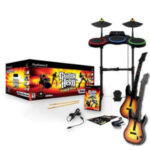Music theory often gets a bad rap. For many guitarists, the thought of delving into scales, chords, and complex musical concepts conjures up images of dusty textbooks and tedious exercises, far removed from the joy of actually playing. Struggling with sheet music, deciphering strange symbols, and grappling with abstract ideas can quickly kill the passion that drove you to pick up the guitar in the first place. It’s easy to see why so many guitar players decide to skip music theory altogether, preferring the immediate gratification of jamming and learning by ear. However, the real issue isn’t music theory itself, but how it’s often presented and taught. For the contemporary guitarist, focused on playing in bands, writing songs, or improvising, traditional classical music theory can feel irrelevant and impractical. Learning to read C clef, for example, is unlikely to be the key to unlocking your musical aspirations on the guitar. The good news is that there’s a different approach – one that focuses on applicable music theory directly relevant to your guitar playing and musical goals.
Music Theory: It’s All About Internalizing the Concepts
I’ve always been fascinated by music theory, driven by a need to understand the “why” behind the music. This deep dive into theory became a significant advantage. When I studied music at university, theory courses became surprisingly straightforward. I could complete exams quickly and confidently, while many classmates struggled for the full allotted time, still drawing diagrams and charts to figure out the answers. My secret? I had internalized music theory to the point where I could process it mentally, without needing external aids. Years of playing and studying had ingrained the language of music so deeply that it became intuitive. Beyond academic success, this thorough understanding of music theory translated directly into my playing. When you’re performing live, improvising a solo, or experimenting with chord variations, there’s no time to stop and analyze the theory behind each note. If you want to spontaneously explore new musical ideas, inject creativity into your chord progressions, or pull off unexpected but fitting substitutions, a strong theoretical foundation is essential. It empowers you to make informed musical decisions in real-time.
Context is King: Making Music Theory Relevant to Guitarists
For the past couple of years, I’ve taught introductory music theory to students starting their music degrees. Initially, I noticed a lack of engagement and a common question: “How will this actually help me as a musician?” This prompted me to dedicate an entire lesson to establishing context and demonstrating the practical applications of music theory. I explained how a solid grasp of keys, chords, and intervals dramatically improves musical comprehension and accelerates song learning. Imagine being able to transpose a song instantly in your head to fit your vocal range or jam with musicians in different keys effortlessly. Music theory makes this possible. Furthermore, it unlocks creative possibilities like crafting unique chord voicings and substitutions that add depth and intrigue to your music. Understanding theory empowers you to analyze songs, decipher chord progressions, and recognize the underlying harmonic structure, even in complex pieces. This knowledge translates to greater musical freedom, both in performance and songwriting. It provides you with a vocabulary to understand and articulate what you hear and play. This is what applicable music theory is all about – essential knowledge that directly enhances your musicianship. After emphasizing this practical context, the class’s attitude shifted dramatically. Suddenly, music theory became relevant and engaging. I shared my own experience of excelling in theory at university and introduced a simple yet effective exercise designed to accelerate their theoretical fluency, helping them achieve in a shorter time what took me years of self-discovery.
Essential Elements of Applicable Music Theory for Guitar
In my view, applicable music theory boils down to three interconnected core elements. Mastering these areas is crucial for developing a practical, usable understanding of music theory, transforming it from a chore into a powerful tool:
- Memorize Key Signatures: Knowing your key signatures inside and out is fundamental. It’s the roadmap to understanding scales, chords, and harmonic relationships within a key.
- Understand Chord Construction: Grasping how chords are built – major, minor, dominant, and beyond – and how they function within a key is essential for songwriting, improvisation, and understanding chord progressions.
- Instantly Name Intervals: Being able to quickly identify intervals from any root note is vital for ear training, understanding scales and chords, and communicating musical ideas effectively.
While this might seem like a daunting task, focusing on a strategic exercise that integrates these three elements can significantly accelerate your progress and reveal their interconnectedness.
Before diving into the exercise, let’s briefly elaborate on each of these essential elements:


